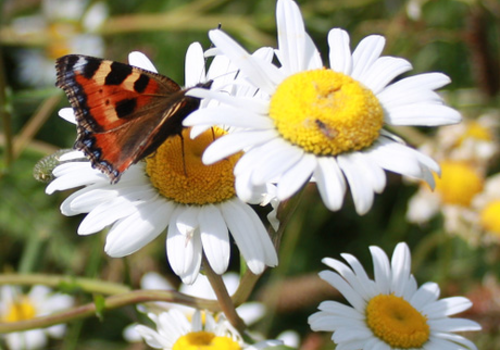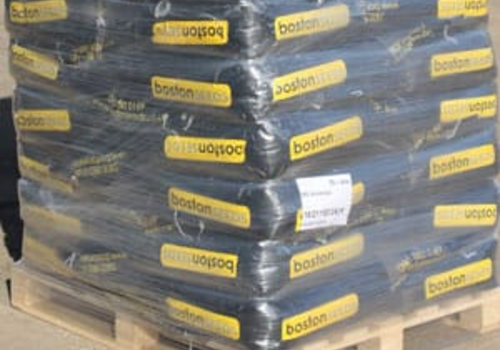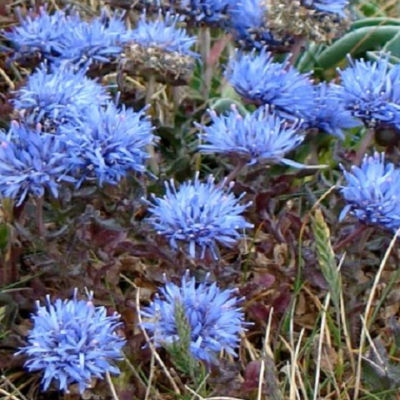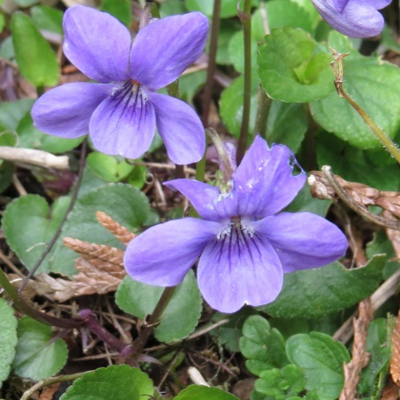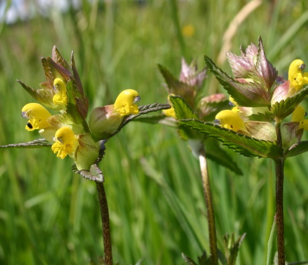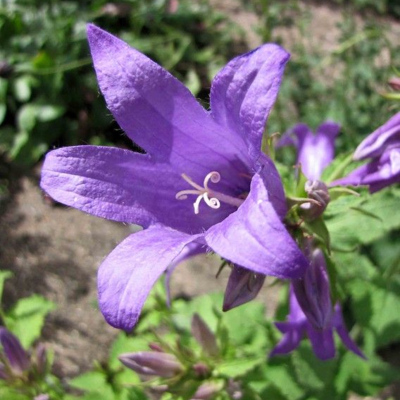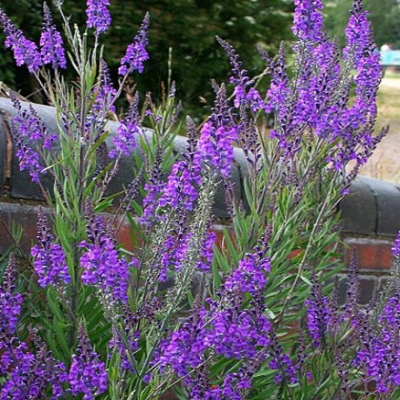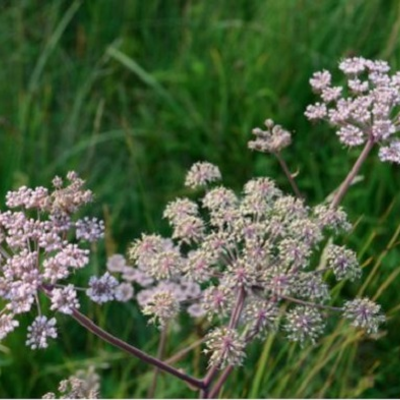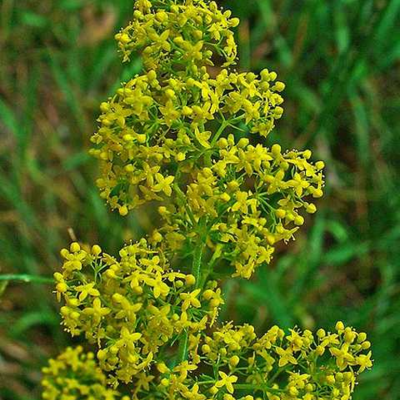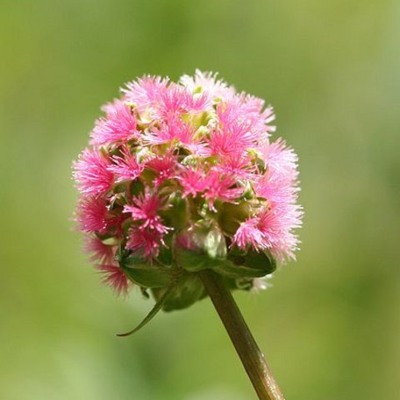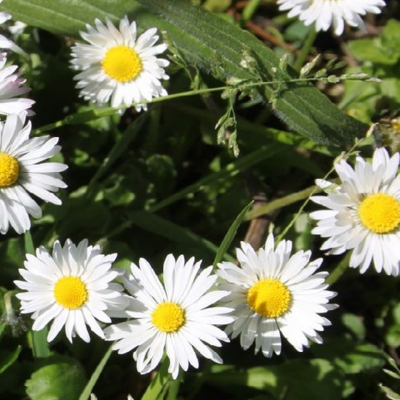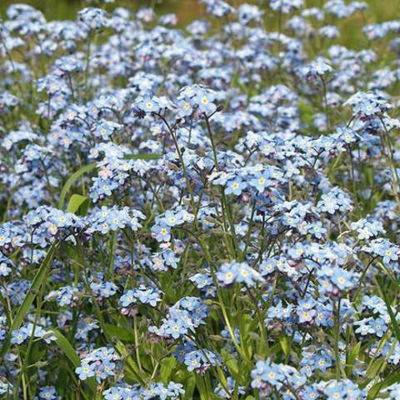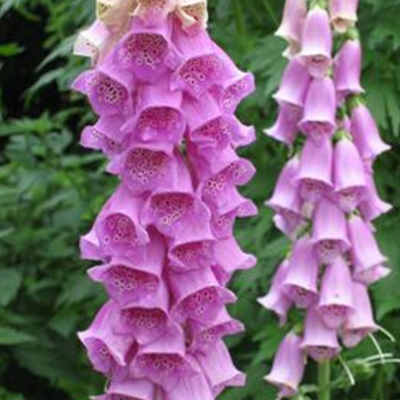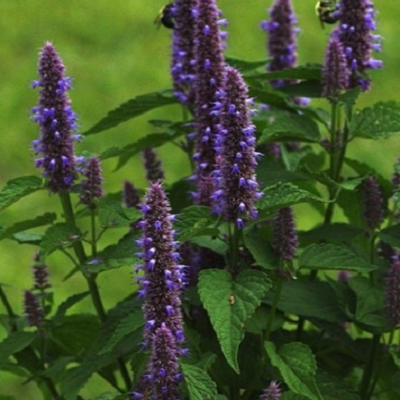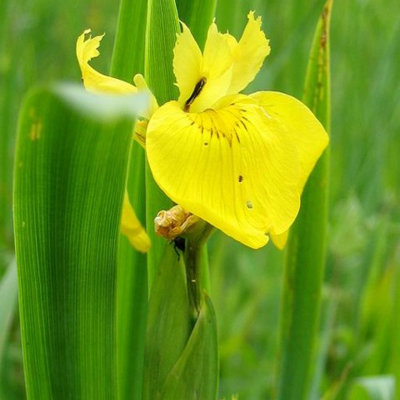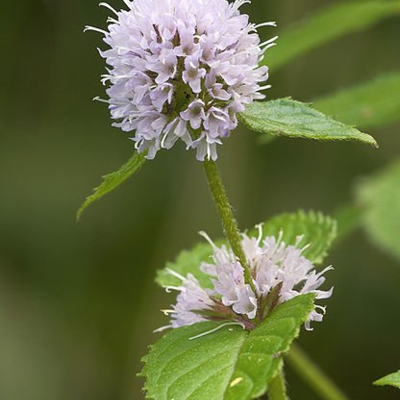Wildflower Plants A to Z
Choose from our entire range of over 100 wildflower plug plants, expertly grown in our very own nursery from high quality, UK native wildflower seed. Our wildflower plugs are ready to be planted straight out into your garden or meadow as soon as they arrive, all year round. Buying individual wildflower plants is one of the best ways to establish your chosen wildflower species, planted individually or as part of a more diverse meadow created from our range of wildflower seeds.
Don't hesitate to get in touch to speak to one of our experts or request a catalogue to view our full range. Ordering regularly or looking for large volumes? Click here to apply for a trade account today - we review all applications within one working day.
These soft-looking, bright blue blooms pair perfectly with other fluffy-petalled flowers, especially in yellows and pinks, such as hawk-bit and knapweed. An excellent plant for pollinators; bees and butterflies go baa-rmy for them! Recommended for rockeries and rough meadows, or anywhere with sandy soil.
- Type: Biennial
- Height: 20-50cm.
- Flowers: May-September
- Soil Requirement: Well-drained, sandy
- Light Requirement: Full Sun
- Natural Habitat: Grassland, clifftops, coastal areas
- Also known as: Shepherd’s Scabious
Roses are red, and you already knew of the Violet’s namesake shade of purplish-blue. This five-petalled flower’s beauty is well known, and in sun or in shade, it’s quite easily grown. It looks magical decorating the edge of a woodland garden, or beneath a small hedge- but this plant’s so simple, it’s easy to style it; for those who want blue, it just must be the Violet!
- Type: Perennial
- Height: 5-10cm.
- Flowers: April-June
- Soil Requirement: Well-drained
- Light Requirement: Full sun to full shade
- Natural Habitat: Grassland, woodland, hedgerows
- Also known as: Wood Violet

Plants for Pollinators highlights plants selected by the RHS as scientifically proven to tackle the declines in bees, butterflies and other pollinators.
Designed specifically to produce yellow rattle plants easily and quickly. Grown from our own quality-assured, fresh, UK native seed, our yellow rattle plugs are ready to be planted in your garden or meadow immediately upon on arrival in April.
Yellow rattle is a surprisingly musical meadow flower and a must for a wildflower garden: as a semi-parasitic plant, it requires robust neighbour plants like grasses and legumes, but also acts as a watchdog against vigorous weeds.. That's on top of the beauty of its golden, bell-shaped flowers, complete with a charming 'chime' as its ripened seed pods rattle in the breeze.
Our yellow rattle plug plants are grown from high-quality, British seed from wild meadow collections, and arrive ready to be planted complete with the essential meadow grasses.
- Type: Annual
- Height: 20–50cm.
- Flowers: May-September
- Soil Requirement: Moist or well-drained
- Light Requirement: Full sun
- Natural Habitat: Grassland, meadows
- Also known as: Corn Rattle, Hay Rattle, Penny Grass
This large species of bellflower produces petals in purple and periwinkle blue. Ideal for woodland gardens and lighting up shady spots, it’s hardy and easy to naturalise!
- Type: Perennial
- Height: 90–150cm.
- Flowers: June-September
- Soil Requirement: Well-drained
- Light Requirement: Partial to full shade
- Natural Habitat: Woodlands, hedge banks
- Also known as: Brantwood, Large Campanula
This item is currently unavailable
What’s better than spikes of snapdragon-like wildflowers? This particular plant specimen’s vivid violet colouration add a rich and regal splash of colour in beds, borders and gravel gardens, as well as being beneficial for bees and being super easy to naturalise.
- Type: Perennial
- Height: 22-60cm.
- Flowers: June-October
- Soil Requirement: Well-drained, sandy
- Light Requirement: Full sun
- Natural Habitat: Waste ground, rocky soil
This item is currently unavailable

Plants for Pollinators highlights plants selected by the RHS as scientifically proven to tackle the declines in bees, butterflies and other pollinators.
Wild Angelica is a marshy wildflower boasting boisterous, tall-growing branches that are hairless and often tinted purple. Likewise, her bubbly bursts of bright white florets are often tinted with tiny pink spikes. The Wild Angelica was also once treasured as a decoration for cakes and confectionaries.
- Type: Perennial or biennial
- Height: 150–250cm.
- Flowers: July-September
- Soil Requirement: Moist but well-drained
- Light Requirement: Full sun
- Natural Habitat: Damp meadows, wet woodlands, fenland
- Also known as: Garden Angelica, Wild Celery
This item is currently unavailable

Plants for Pollinators highlights plants selected by the RHS as scientifically proven to tackle the declines in bees, butterflies and other pollinators.
The Lady’s Bedstraw is a hardy, sprawing plant which bears vast whorls and clusters of tiny golden flowers. It also boasts a distinct and sweet scent, even when dried: its unusual name originates from its use to scent bedding in Victorian times.
- Type: Perennial
- Height: 15-30cm.
- Flowers: June-September
- Soil Requirement: Well-drained
- Light Requirement: Full sun or partial shade
- Natural Habitat: Grassy meadows, road verges, clifftops and hills
- Also known as: Maiden’s Hair, Fenwort, Cheese Rennet
This item is currently unavailable
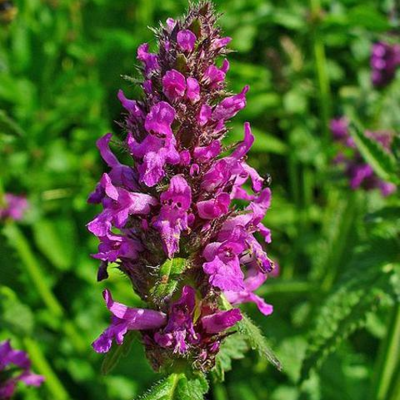

Plants for Pollinators highlights plants selected by the RHS as scientifically proven to tackle the declines in bees, butterflies and other pollinators.
Betony flowers bloom in spikes of rich wine red and purple, alongside distinct and attractive foliage. Its flowers are also known to attract bees and butterflies and they used to be planted in churchyards for spiritual protection. They grow well in any light, with an affinity for damp soil.
- Type: Perennial
- Height: 30-60cm.
- Flowers: June-August
- Soil Requirement: Moist but well-drained
- Light Requirement: Full sun or partial shade
- Natural Habitat: Grassy meadows, river banks
- Also known as: Bishops’s Wort, Wood Betony, Common Hedgenettle
This item is currently unavailable
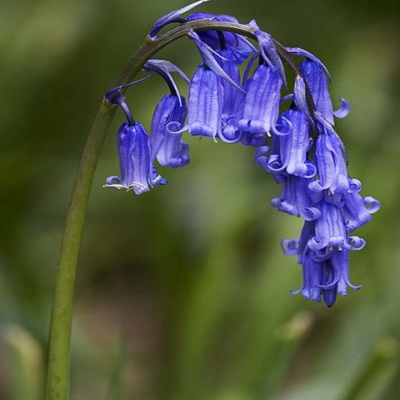

Plants for Pollinators highlights plants selected by the RHS as scientifically proven to tackle the declines in bees, butterflies and other pollinators.
What else is there to say about the dainty azure arcs of the beloved Bluebell? Though they take several years to develop from seed, fully grown bluebells naturalise quickly and can multiply over time, leaving your garden awash and aglow with the famous fairy-tale flora! In addition, Bluebells can rarely grow in pink and white.
- Type: Perennial
- Height: 30–60cm.
- Flowers: April-June
- Soil Requirement: Well-drained
- Light Requirement: Partial shade
- Natural Habitat: Woodlands, hedge banks
- Also known as: Bell Bottle, Cuckoo’s Boots, Witch’s Thimbles
This item is currently unavailable
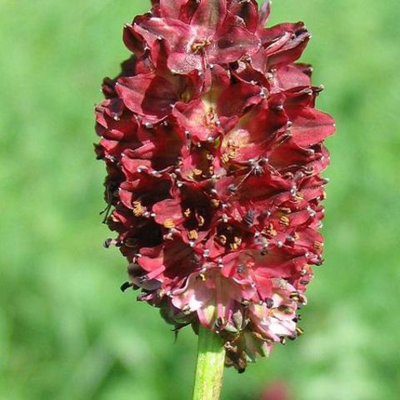

Plants for Pollinators highlights plants selected by the RHS as scientifically proven to tackle the declines in bees, butterflies and other pollinators.
The Great Burnet is a lively-looking plant, sporting crimson flower clusters atop tall, branching stems with distinct jagged leaves. They’re highly attractive to pollinators, and for a good reason; this wild-growing relative of the rose is not to be overlooked!
- Type: Perennial
- Height: 45-90cm.
- Flowers: June-September
- Soil Requirement: Moist but well-drained
- Light Requirement: Full sun or partial shade
- Natural Habitat: Floodplains, meadows, riverbanks
- Also known as: Burnet Bloodwort
This item is currently unavailable

Plants for Pollinators highlights plants selected by the RHS as scientifically proven to tackle the declines in bees, butterflies and other pollinators.
A smaller species of burnet with miniature, round red flowers growing in clusters, as well as edible toothed leaves which are pleasantly scented when crushed.
- Type: Perennial
- Height: 20-50cm.
- Flowers: May-August
- Soil Requirement: Well-drained
- Light Requirement: Full sun
- Natural Habitat: Chalky grasslands
- Also known as: Garden Burnet, Pimpernelle, Toper’s Plant
This item is currently unavailable
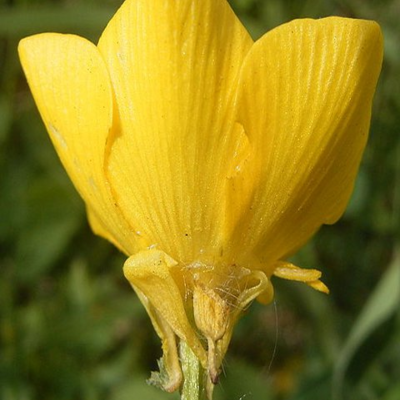

Plants for Pollinators highlights plants selected by the RHS as scientifically proven to tackle the declines in bees, butterflies and other pollinators.
So-named for their swollen underground stem, the bulbous buttercup is a more widespread variant of the iconic glossy-yellow springtime wildflower. Thrives in acidic soil, with good sunlight to best bring out its golden glow.
- Type: Perennial
- Height: 30–45cm.
- Flowers: March-June
- Soil Requirement: Well-drained
- Light Requirement: Full sun
- Natural Habitat: Meadows, grasslands, road verges
- Also known as: Frogs-Foot, Goldcup
This item is currently unavailable
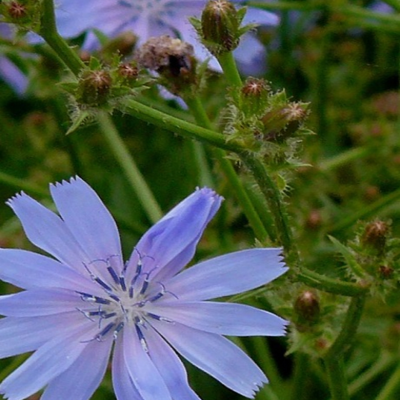

Plants for Pollinators highlights plants selected by the RHS as scientifically proven to tackle the declines in bees, butterflies and other pollinators.
The Chicory is a perfect mix of energetic colour and grace, producing feathery, sky blue petals on thin, branching stems. In addition to making a creative climber, the Chicory’s roots have also seen a wide range of culinary uses, especially as an alternative to coffee - but we think the beauty of its bold blooms are enough of a boost!
- Type: Perennial
- Height: 30–90cm.
- Flowers: June-October
- Soil Requirement: Well-drained
- Light Requirement: Full sun
- Natural Habitat: Fields, road verges
- Also known as: Blue Dandelion, French Endive, Succory
This item is currently unavailable

Plants for Pollinators highlights plants selected by the RHS as scientifically proven to tackle the declines in bees, butterflies and other pollinators.
Appearance-wise, the Common Daisy’s nothing crazy, with a ruffle of thin white petals, sometimes tinged pink, framing a central crown of tiny yellow florets. But love it or love it not, this famous flora is certainly robust, hardy and long-flowering, meaning its classic, cheery charm will shine in a lawn, bed or meadow for quite some time.
- Type: Perennial
- Height: 5–10cm.
- Flowers: All year
- Soil Requirement: Moist or well-drained
- Light Requirement: Full sun or partial shade
- Natural Habitat: Meadows, woodlands, road verges
- Also known as: Bone Flower, Goose Flower, Luckin Gowan
This item is currently unavailable
There is something strangely unforgettable about this flower’s simple-but-unique tiny, baby-blue blooms with rare bursts of pink, and silvery foliage. They’re also perfect for pollinators and have a knack for self-seeding.
- Type: Annual
- Height: 7-25cm.
- Flowers: April-October
- Best Sown: Autumn
- Soil Requirement: Well-drained
- Light Requirement: Full sun
- Natural Habitat: Road-sides, dry grasslands
- Also known as: Blue Mouse-Ear, Scorpion Grass
This item is currently unavailable
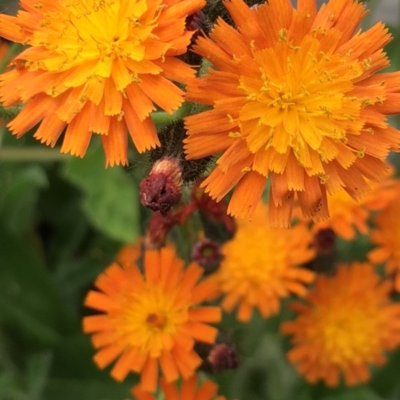

Plants for Pollinators highlights plants selected by the RHS as scientifically proven to tackle the declines in bees, butterflies and other pollinators.
Now here's a foxy flower- literally! Bearing fuzzy-looking, monarch orange flowers with brush-like edges, with stems covered in black hairs, it's easy to compare this low-maintenance wildflower to a fox leaving its den- and the clusters of new flowers which open beneath it to its shy, newborn litter of cubs!
- Type: Perennial
- Height: 15-30cm
- Flowers: June-September
- Soil requirement: Well-drained
- Light requirement: Full sun or partial shade
- Natural habitat: Meadows, embankments, road verges, stony wasteland
- Also known as: Devil's Paintbrush, Golden Mouse Ear, Grim-the-Collier
This item is currently unavailable

Plants for Pollinators highlights plants selected by the RHS as scientifically proven to tackle the declines in bees, butterflies and other pollinators.
Few flowers match the fairy-tale flair of the foxglove: its towering stems of majestic magenta bells feature heavily across myths as a source of healing and protective magic, and a favourite of fairies- we can’t confirm if that’s true, but they are a favourite of bees and butterflies! Best grown in the back of a border to frame other flowers. Make sure to handle with gloves.
- Type: Biennial
- Height: 60–150cm.
- Flowers: June-September
- Soil Requirement: Well-drained
- Light Requirement: Full sun or partial shade
- Natural Habitat: Forest borders, footpaths
- Also known as: Dragon’s Mouth, Fairy Bells, Thimble Flower
This item is currently unavailable
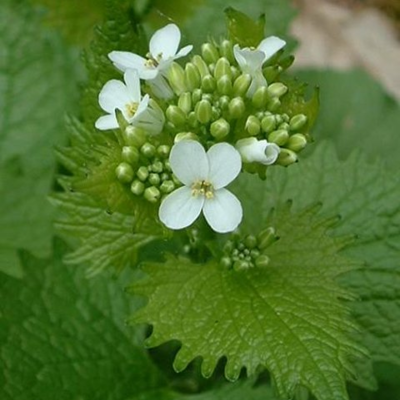

Plants for Pollinators highlights plants selected by the RHS as scientifically proven to tackle the declines in bees, butterflies and other pollinators.
Produces pearl white, four-petalled flowers and distinctly toothy heart-shaped leaves which provide the plant its name, as they smell like garlic when crushed. Its leaves are good for culinary usage, but its flowers make an excellent dressing for the garden, with their star-like petals sprinked beneath a bush creating a delectable display.
- Type: Biennial
- Height: 30-80cm.
- Flowers: April-July
- Soil Requirement: Well-Drained
- Light Requirement: Full or partial shade
- Natural Habitat: Woodlands, hedgerows
- Also known as: Jack-By-The-Hedge, Hedge Garlic
This item is currently unavailable
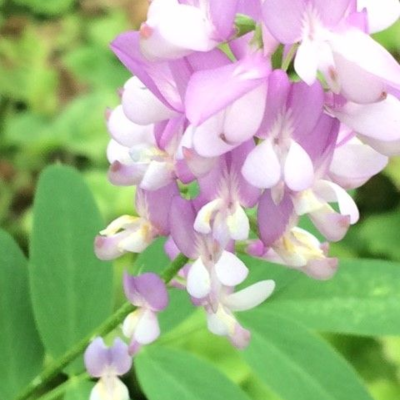

Plants for Pollinators highlights plants selected by the RHS as scientifically proven to tackle the declines in bees, butterflies and other pollinators.
Goat's Rue is a medium to tall plant with lilac-to-lavender petals in the shape of small sweetpeas. While it was previously grown readily as forage and medicinal crop, it's nowadays seen as an excellent ornamental plant that is attractive to a variety of insects as a food source.
- Type: Perennial
- Height: 100-150cm.
- Flowers: July to September
- Soil requirement: Moist but well-drained
- Light requirement: Full sun or partial shade
- Natural habitat: Damp meadows, river banks
- Also known as: French Lilac, Professor-Weed, Italian Finch
This item is currently unavailable
What’s better than the Anise Hyssop’s clumps-forming, soft spikes of mauve flowers? Perhaps only its aromatic leaves! A nectar-rich scented sensation of a herb best placed at the back of a border, where it brings in bees and butterflies.
- Type: Perennial
- Height: 60-100cm.
- Flowers: June-September
- Soil Requirement: Well-drained
- Light Requirement: Full sun or partial shade
- Natural Habitat: Dry forests, praries
- Also known as: Fragrant Giant Hyssop, Lavender Giant Hyssop
This item is currently unavailable
The Yellow Flag Iris is thought by some to be the original fleur-de-lis, a symbol of heraldry and royalty. And while the golden, three-petalled flowers and blade-like leaves are regal indeed, its true name is just as appropriate, as this water-resistant plant grows on tall, branching stems which display its beautiful blooms like flags waving in the wind. Recommended as a pond-side plant.
- Type: Perennial
- Height: 100-150cm.
- Flowers: May-August
- Soil Requirement: Moist
- Light Requirement: Full sun or partial shade
- Natural Habitat: Marsh, flood planes, ditches
- Also known as: Flagon, Water Flag, Yellow Fleur-De-Lis
This item is currently unavailable
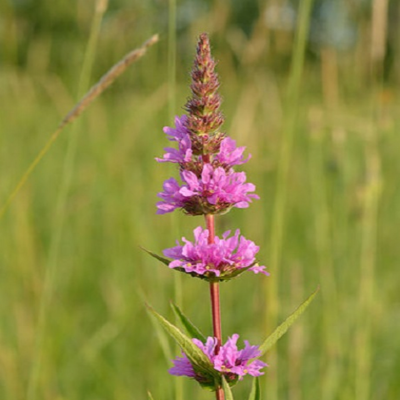

Plants for Pollinators highlights plants selected by the RHS as scientifically proven to tackle the declines in bees, butterflies and other pollinators.
A robust marsh flower which produces tall plumes of magenta blooms. Perfect for the pondside- let them loose and enjoy these sensational spikes of colour as they bring in bees!
- Type: Perennial
- Height: 60-120cm.
- Flowers: June-September
- Soil Requirement: Moist
- Light Requirement: Full sun or partial shade
- Natural Habitat: Marshes, riverbanks, fens
- Also known as: Black Blood, Rainbow Weed, Red Sally
This item is currently unavailable
This is the perfect pond-side plant for those wanting a breath of fresh air! Produces globes of pale pink petals that are good for pollinators, and just as appealing are its aromatic leaves, which can even be used as a flavouring. Needless to say, this is one cool flower.
- Type: Perennial
- Height: 60-80cm.
- Flowers: July-October
- Soil Requirement: Moist
- Light Requirement: Full sun or partial shade
- Natural Habitat: Wet meadows, marshes, river banks
- Also known as: Fish Mint
This item is currently unavailable
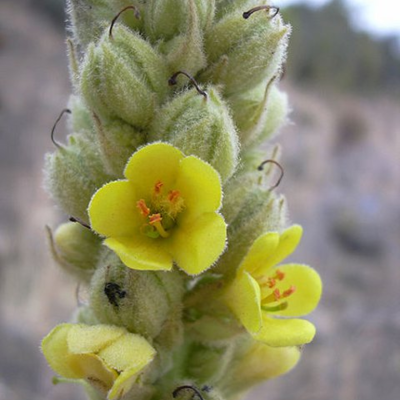

Plants for Pollinators highlights plants selected by the RHS as scientifically proven to tackle the declines in bees, butterflies and other pollinators.
The Great Mullein bears tall spires of soft, silvery leaves which spiral around the stem. In fact, this plant’s super-soft, hairy texture is just as well-known as the dense clusters of miniature pale-gold flowers it produces. Throughout history this plant’s seen a variety of uses, and in the garden it benefits bees and butterflies greatly, with some species of bees using its silvery ‘hair’ to build their homes. A friendly flower which helps the wildlife and adds a uniquely bright splash of colour to the backs of borders.
- Type: Biennial
- Height: 100-180cm.
- Flowers: July-September
- Soil Requirement: Well-drained
- Light Requirement: Full sun
- Natural Habitat: Woodland margins, clearings, waste grounds
- Also known as: Aaron’s Rod, Feltwort, Velvet Plant
This item is currently unavailable
Choosing different wildflower plants by species gives you complete control over when you plant them, where you plant them and what the end result will be. And buying wildflower plug plants instead of seeds, means that you don't have to wait for them to germinate - perfect if speed is of the essence!
The full range of over 100 British wildflower plants species from Boston Seeds is available to buy online in trays of 25, 150 and 500 plug plants and all are available with nationwide delivery.
Want to learn more about the likes and dislikes of your favourite wildflower plants? Our handy wildflower species quide will tell you all you need to know - yours to download and keep for FREE.
Buy With Confidence

